Gorgeous corners of the Caribbean to see in your lifetime
Postcard perfect
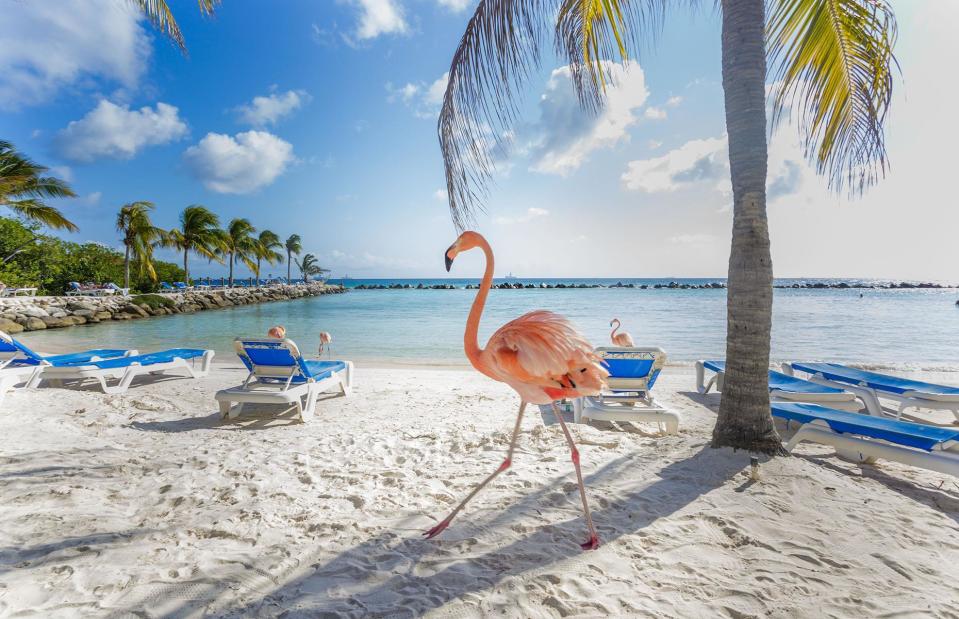
MasterPhoto/Shutterstock
Step ashore on any Caribbean island and it is immediately obvious that the region is blessed by nature. The sand is so white, the water so intensely blue and the palm trees are so perfectly picturesque. But there is beauty to be found in the colourful capitals too.
Read on to discover the most beautiful places to behold in this gorgeous corner of the planet – both above and below the water...
The Pitons, St Lucia
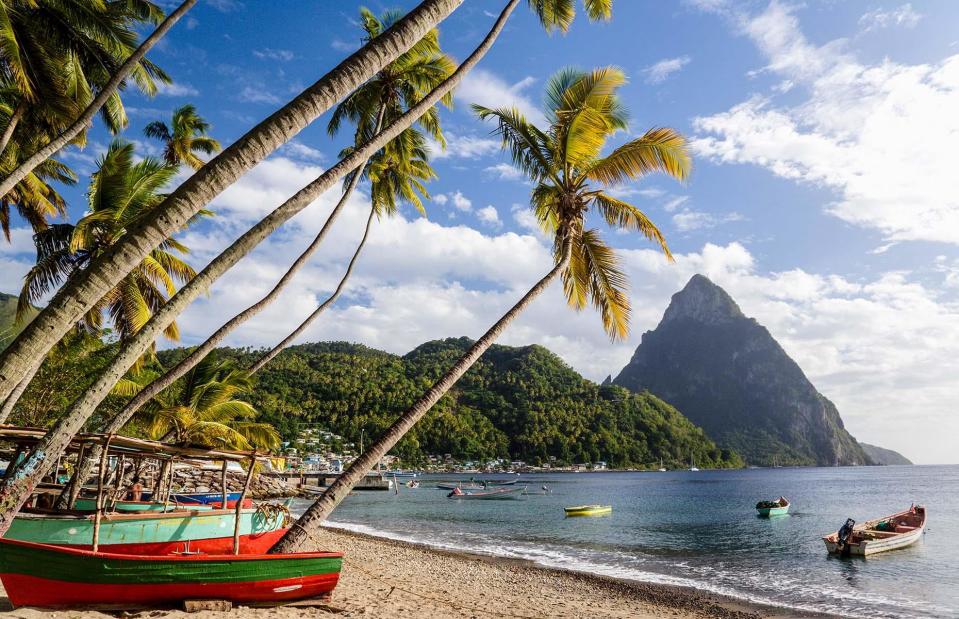
Eye Ubiquitous/Alamy Stock Photo
Tucked away in the southwest corner of the island, St Lucia’s UNESCO World Heritage-listed Pitons rise sharply from the Caribbean Sea, two triangular volcanic plugs clad in thick vegetation. Gros Piton is slightly taller at 2,530 feet (771m), with Petit Piton just behind at 2,438 feet (743m). Together they form a perfect backdrop for your St Lucian adventure – from the beach, a sailing boat or the pool at hotels such as Stonefield Resort. Alternatively, hike the well-marked trails on Gros Piton to experience their breathtaking beauty up close.
Barbuda, Antigua and Barbuda
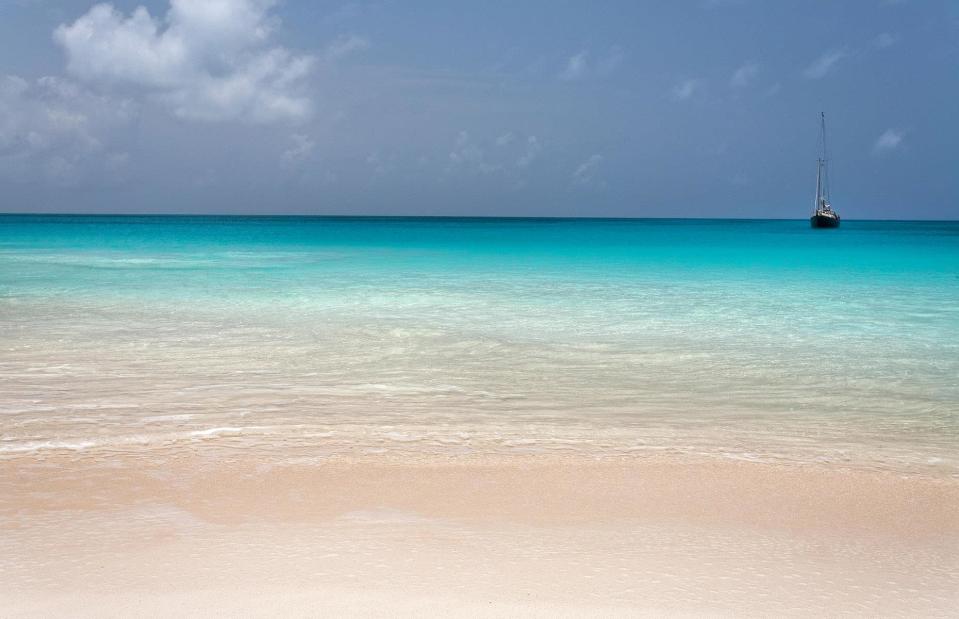
Susan E. Degginger/Alamy Stock Photo
Robert De Niro was so entranced by the endless white sands of Princess Diana Beach in Barbuda that he asked the captain of his yacht to cast anchor so he could wade ashore. Now he's built a Nobu restaurant there, the epitome of barefoot luxury. There’s an equally beautiful and empty pink-sand beach, a magnificent lagoon home to the world's largest gathering of frigate birds and a wild Atlantic coastline pockmarked with caves that once hid escaped enslaved people. Barbuda is full of surprises, the biggest being how little-visited it is.
The Baths, Virgin Gorda, British Virgin Islands
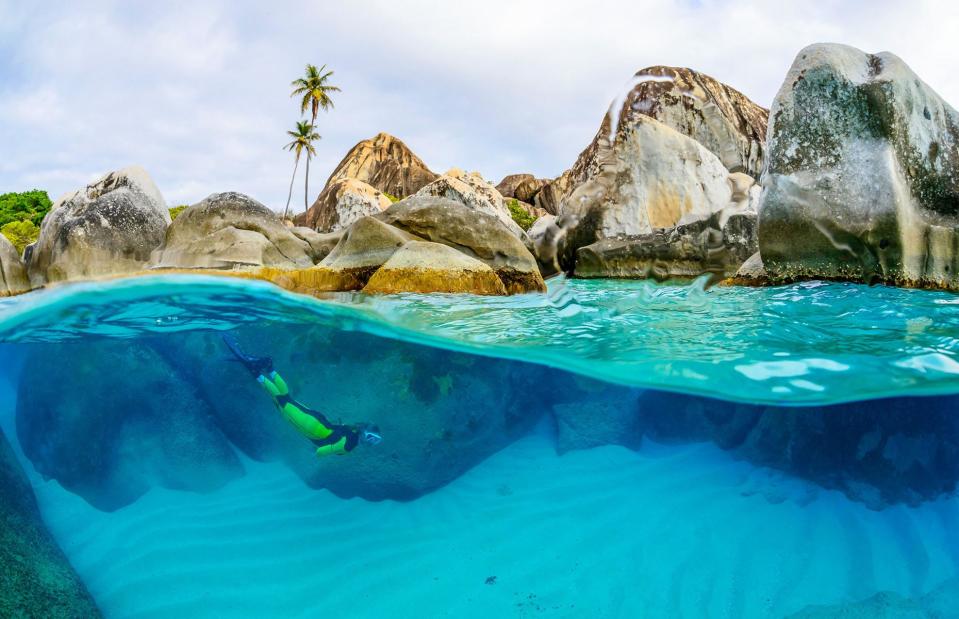
Poelzer Wolfgang/Alamy Stock Photo
The giant granite boulders that sit in a tumbled pile at The Baths on Virgin Gorda, some 40 feet (12m) high, form one of the most unique sights in the Caribbean. They also create a labyrinth of caves, passageways and pools that are a delight to explore and a fun way to reach the white sands of Devil’s Bay on the other side. Take time to soak up the ethereal atmosphere of the famous Cathedral Room, a pool of crystal clear water in a cavernous space illuminated by light that seeps between the cracks where the huge boulders meet.
Terre-de-Haut, Guadeloupe
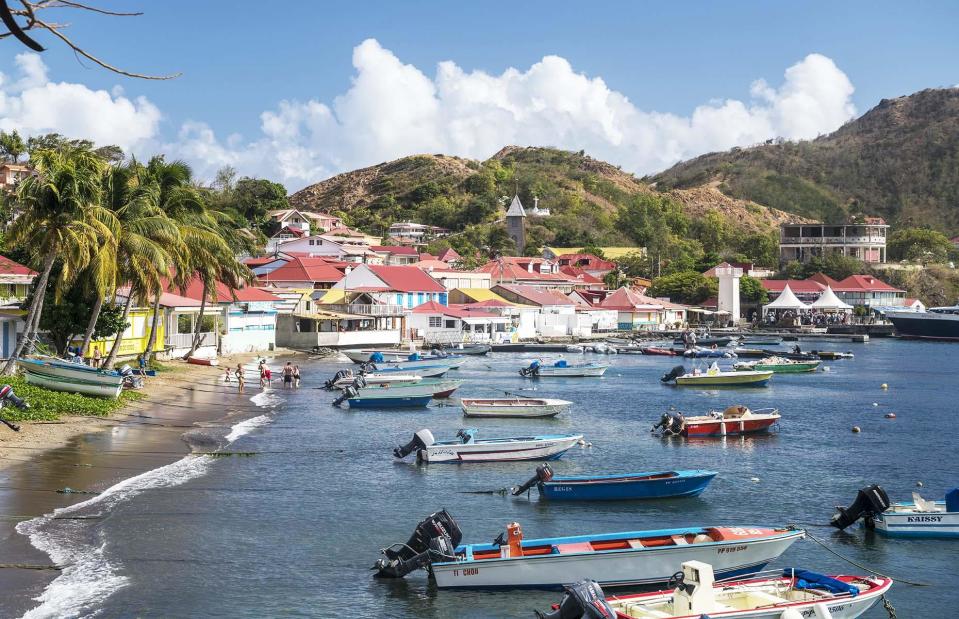
dpa picture alliance/Alamy Stock Photo
Terre-de-Haut Island is the easternmost island in the Iles des Saintes, part of the archipelago of Guadeloupe. It is the most cosmopolitan of Guadeloupe’s outlying islands, popular with sailors and divers alike, and at times feels like a particularly relaxed slice of the south of France. Explore the narrow lanes and colourful wooden houses of the town of Terre-de-Haut. Cycle to the pristine beaches of Pain de Sucre, Bois Joli and Pompierre. Or dive in the island's clear, clean waters, famous for abundant marine life.
Grace Bay, Providenciales, Turks and Caicos
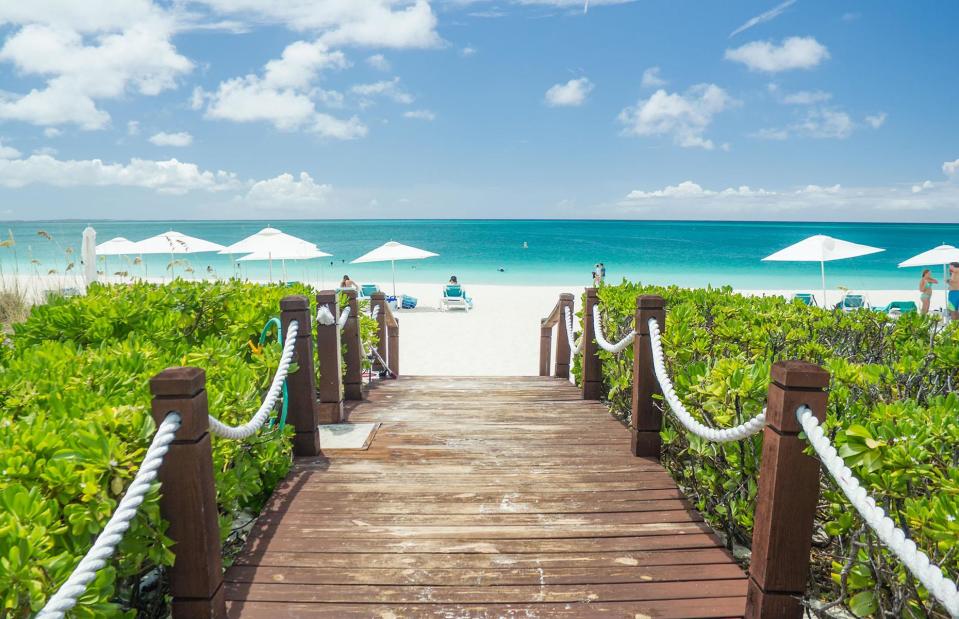
David Rivas/Alamy Stock Photo
In a region synonymous with beautiful beaches, Grace Bay Beach on the northeast coast of Providenciales is arguably the fairest of them all. Its soft white sand and turquoise waters have seen it take first or second place in TripAdvisor’s World’s Best Beaches award for the past decade. Approaching the beach along one of its wooden walkways certainly feels special, as the perfect Caribbean tableau is revealed to you like a movie set. There are no rocks or seaweed and a barrier reef a mile offshore keeps the water calm and still. Perfection.
Morne Trois Pitons National Park, Dominica
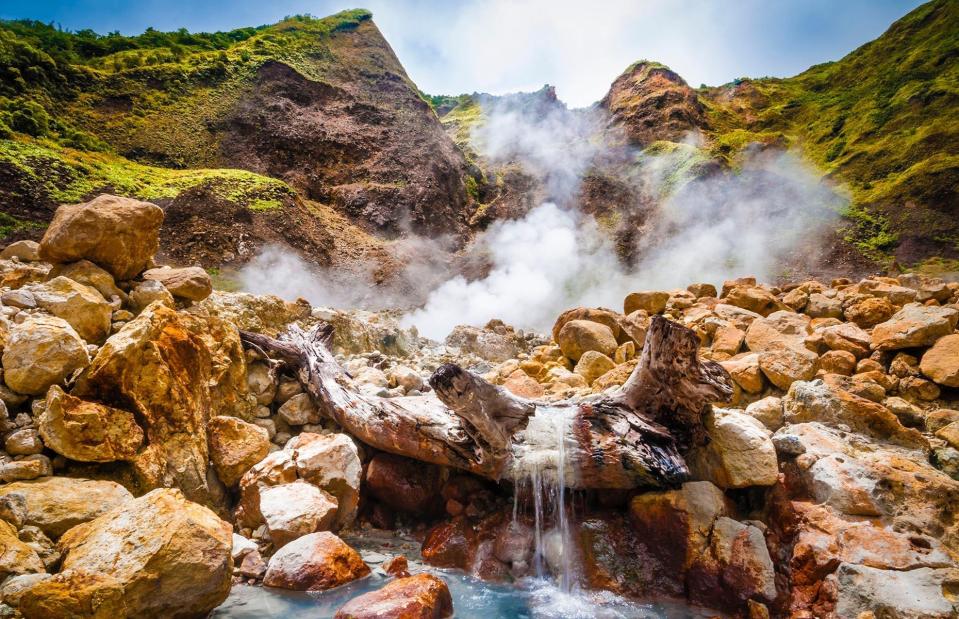
Hemis/Alamy Stock Photo
Gorgeous, green Dominica is known as the ‘nature island’ of the Caribbean. It's the most heavily forested island in the Lesser Antilles, with the beautiful UNESCO-listed Morne Trois Pitons National Park protecting around 17,000 acres of rainforest, montane forest and elfin woodland. But volcanoes are the headline act. The Valley of Desolation, in particular, is an austerely beautiful landscape of steaming fumaroles, cascades and boiling mud, with a thin crust of rocks and boulders stained unearthly colours by the chemicals.
St Nicholas Abbey, Barbados

Otto Borik/Shutterstock
The house at St Nicholas Abbey was built in 1658 by Benjamin Berringer and is one of only three Jacobean-style mansions remaining in the Western Hemisphere. Despite what its name suggests, this stately 350-year-old building was never associated with any church. Rather it served as a plantation house during one of the darker periods of sugar plantations and slavery in the island’s history. Today it is an immaculately restored museum and rum distillery, owned by local Bajan architect Larry Warren.
Flamingo Beach, Renaissance Island, Aruba
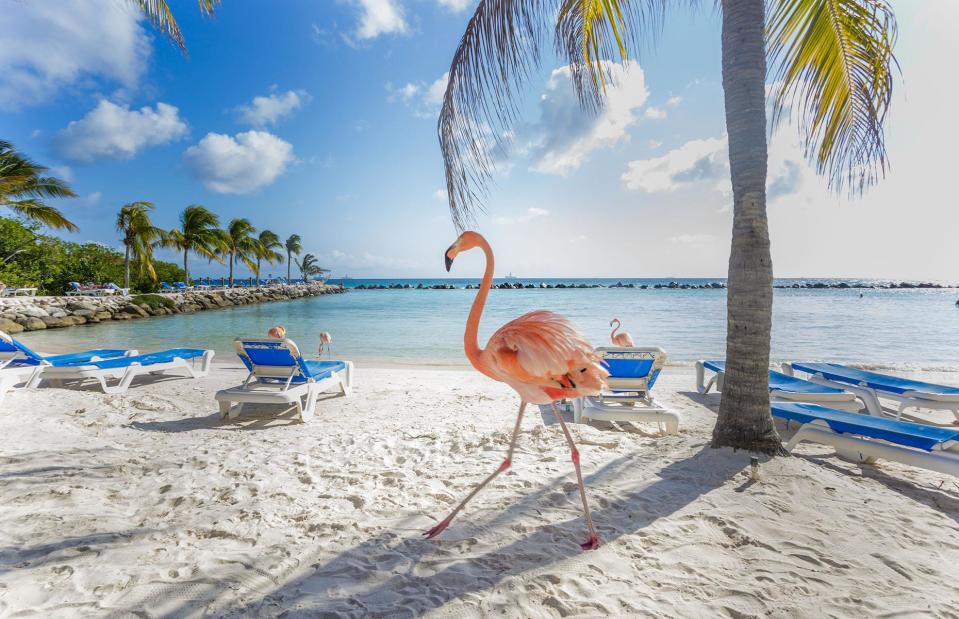
MasterPhoto/Shutterstock
You’re lying on a sun lounger on the paper-white sands of a private beach in Aruba in the Dutch Caribbean. You sip on a tropical cocktail, brought to you by a waiter, looking out across a sparkling blue sea. There’s one thing that would complete this magical scene, and there it is, wandering into your vision – an iridescent coral-pink flamingo. And another, and another. Welcome to the world-famous Flamingo Beach, part of the Renaissance Wind Creek Aruba Resort. Visitor numbers are limited so make sure to book your day pass well in advance.
Gustavia, St Barts

Sean Pavone/Shutterstock
Gustavia is the capital of St Barts and rightly regarded as the most stylish town in the Caribbean. It's certainly got the looks – the wooden, red-roofed buildings hug a gorgeous U-shaped harbour, with splashes of verdant foliage adding an urbane backdrop. Here, visitors stroll between upscale boutiques and art galleries, eat at sophisticated restaurants and enjoy the lively nightlife. Those interested in history can wander the ruins of Fort Gustav and Fort Karl, drop by the Wall House Museum or visit Vieux Clocher, the oldest building in Gustavia.
Bonaire
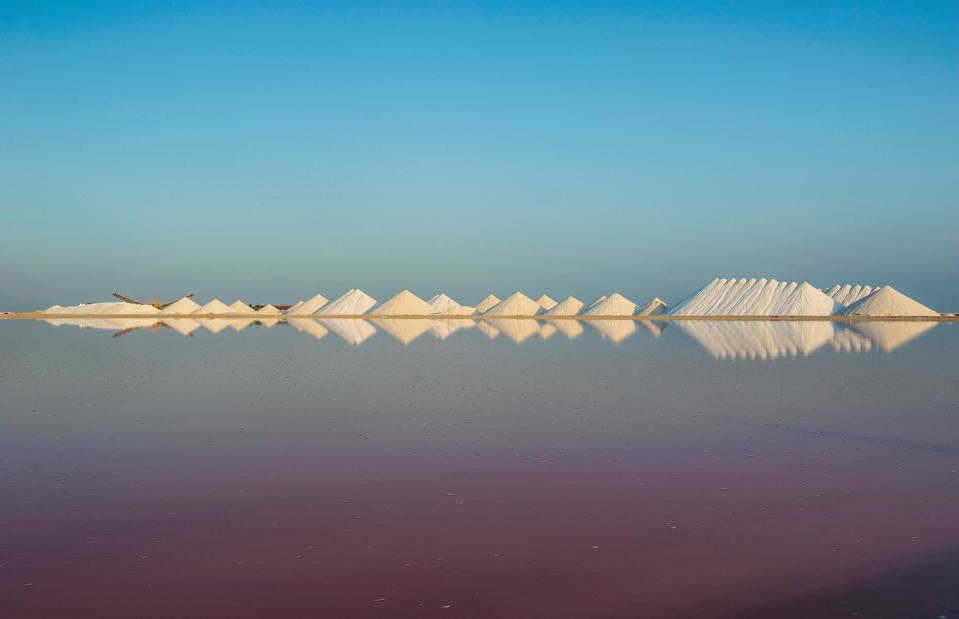
Westend61 GmbH/Alamy Stock Photo
The ‘B’ in the so-called ABC islands of the Dutch Caribbean – Aruba and Curacao make up the rest – tiny Bonaire is a beguiling mix of otherworldly natural landscapes (such as the salt mounts pictured here), colourful Dutch architecture and some of the best diving and snorkelling in the region. Just 80 miles (129km) off the coast of Venezuela, there’s a Spanish influence too, especially around Rincon, the island's only real town besides the capital Kralendijk. White-sand beaches and clear turquoise waters are present and accounted for; they're just a lot less crowded than elsewhere in the region.
Negril, Jamaica
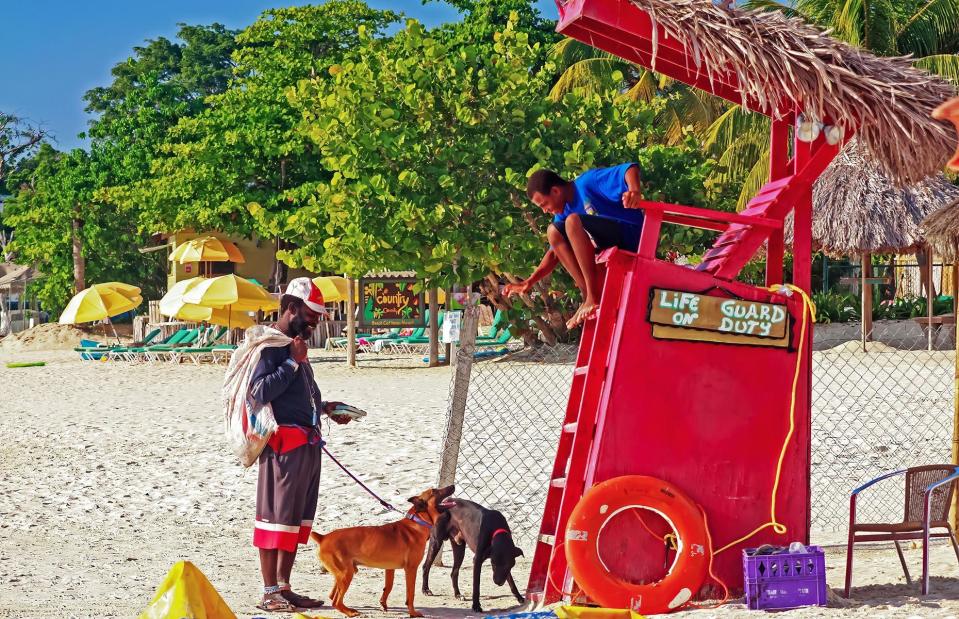
Ralf Liebhold/Shutterstock
With mile upon mile of white sand and a colourful Jamaican vibe, Negril is quite unlike any other place in the Caribbean. The turquoise waters here are invitingly calm, and there’s a lagoon protected by coral reefs that is perfect for snorkelling and scuba diving. But it’s the lively bars and restaurants lining Seven Mile Beach that add colour and life. Take a stroll along the sand as the sun is setting and let your senses lead you to your beach bar of choice.
El Limon waterfall, Dominican Republic
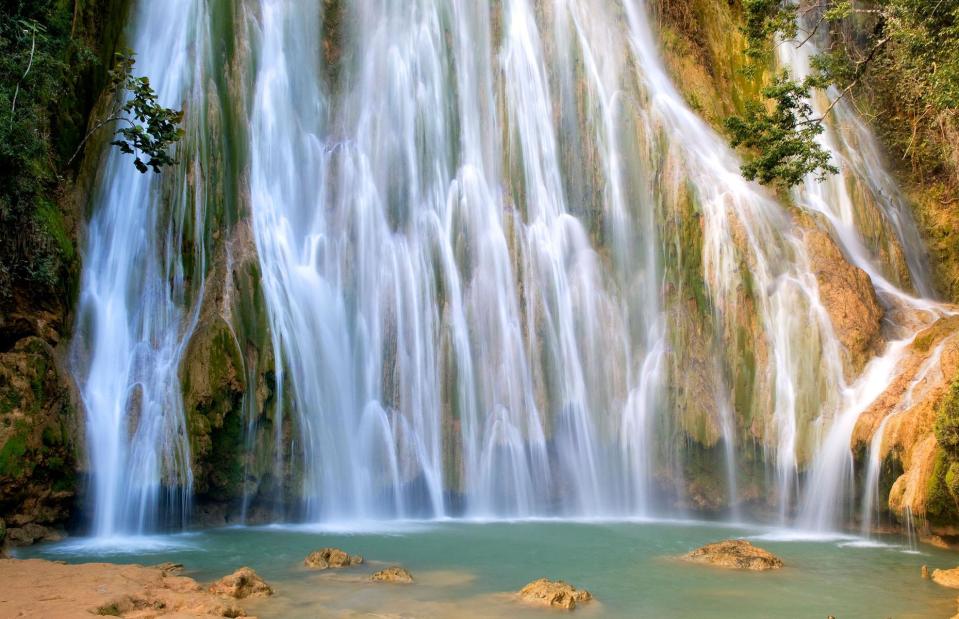
Hemis/Alamy Stock Photo
The stunning El Limon waterfall sits at the end of a 1.5 mile (2.5km) path that twists through lush, hilly terrain teeming with birdlife, native royal palm trees and wild pineapples. Your reward is a gorgeous curtain of cascading water, surrounded by peaks covered in lush greenery, tumbling 130 feet (40m) into a natural pool of emerald green. A quick dip is mandatory, but take the time to lie back and soak up the view amid the roar of the rushing water.
Tobago Cays, St Vincent and the Grenadines
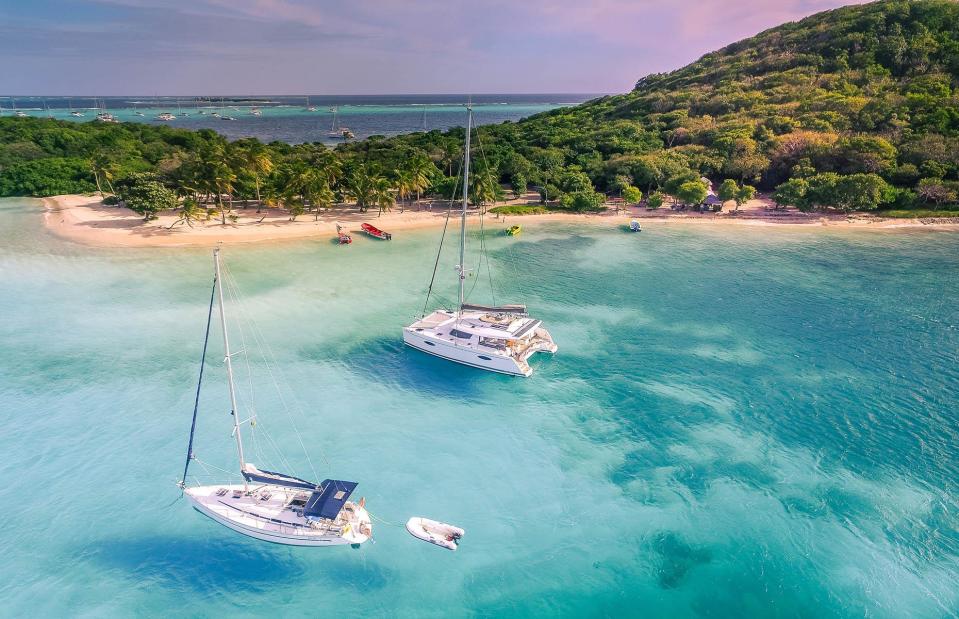
Larwin/Shutterstock
The Tobago Cays are an archipelago located in the Southern Grenadines made up of five small islands with extensive coral reefs. It's a designated marine park, providing sanctuary for sailors – and, in the past, pirates. The reefs surrounding the islands are teeming with colourful fish, and Horseshoe Reef and Mayreau Gardens are popular with divers. You can watch green and hawksbill turtles forage in the Baradal Turtle Sanctuary, head to Petit Tabac, where parts of the Pirates of the Caribbean movies were filmed, or hike the trails on Petit Bateau, James Bay and Petit Rameau.
Tobago Forest Reserve, Trinidad and Tobago
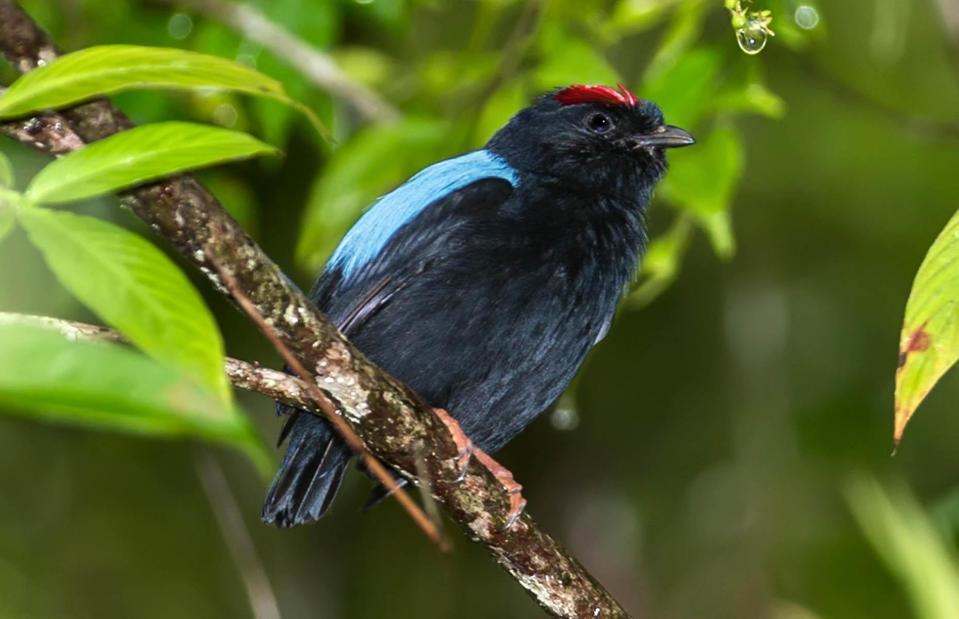
Martin Lindsay/Alamy Stock Photo
The Tobago Forest Reserve has been a protected reserve since 1776, making it the oldest in the western hemisphere. It is one of the most beautiful too, home to 9,780 acres of tropical rainforest and more than 210 species of bird, including the Trinidad motmot and blue-backed manakin. The reserve covers two thirds of the island of Tobago, but Gilpin Trace is probably the best place to start exploring as most of the trails start from here. Or go with a guide and exponentially increase your chances of seeing the birds and other wildlife.
Trunk Bay, St John, US Virgin Islands
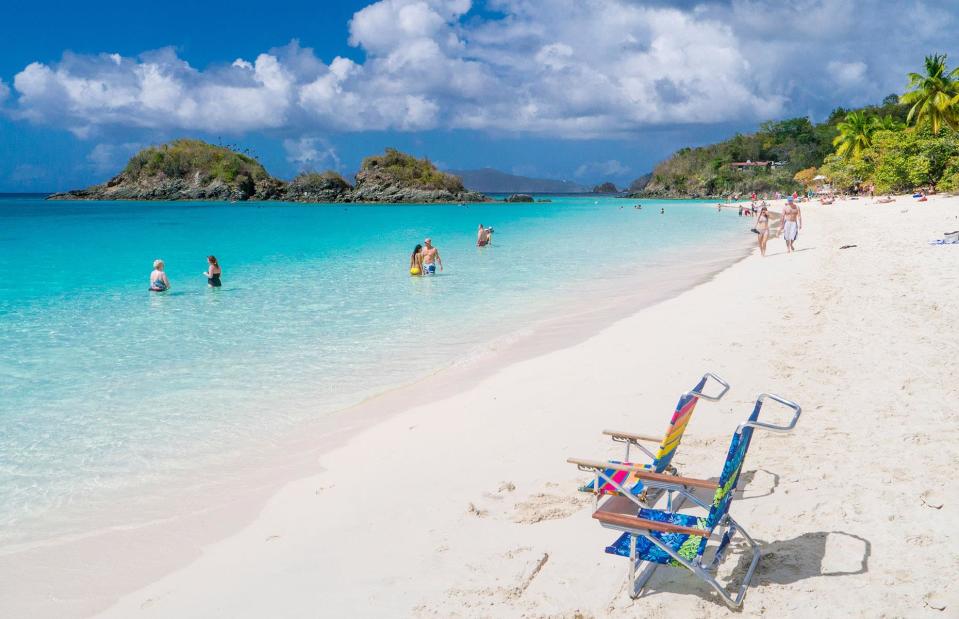
James Schwabel/Alamy Stock Photo
Trunk Bay in St John in the US Virgin Islands is another Caribbean beach that consistently tops ‘best of’ lists, and it’s not hard to see why. The sand is soft and white, the water is bedazzling blue and the beach is wide and deep enough that it never feels crowded. But its greatest asset can be found just offshore – a unique underwater snorkelling trail that leads you through a colourful reef, complete with informative signs about the marine life that makes its home here.
St George's, Grenada
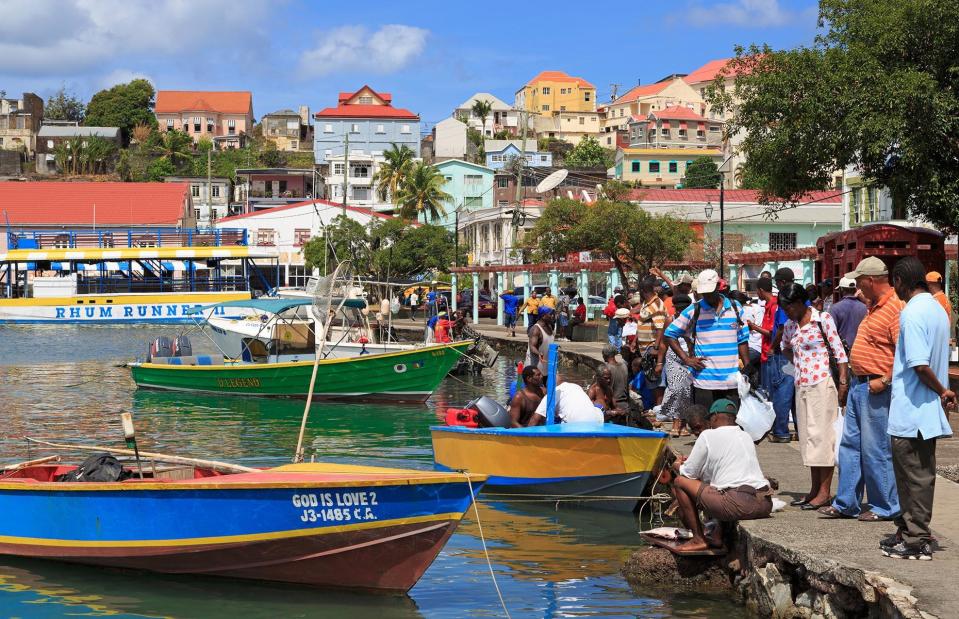
robertharding/Alamy Stock Photo
St George’s is the colourful capital of Grenada, wrapped around one of the best natural harbours in the Caribbean. Here, in the old town in particular, life goes on as it always has, among historic buildings and a waterfront that retains its bygone charms. Explore 18th-century forts, check out the Grenada National Museum or simply use this charming town as a base to explore the waterfalls and forests of the lush, mountainous interior. Gorgeous Grand Anse Beach is just a water taxi ride away too.
Vieques, Puerto Rico
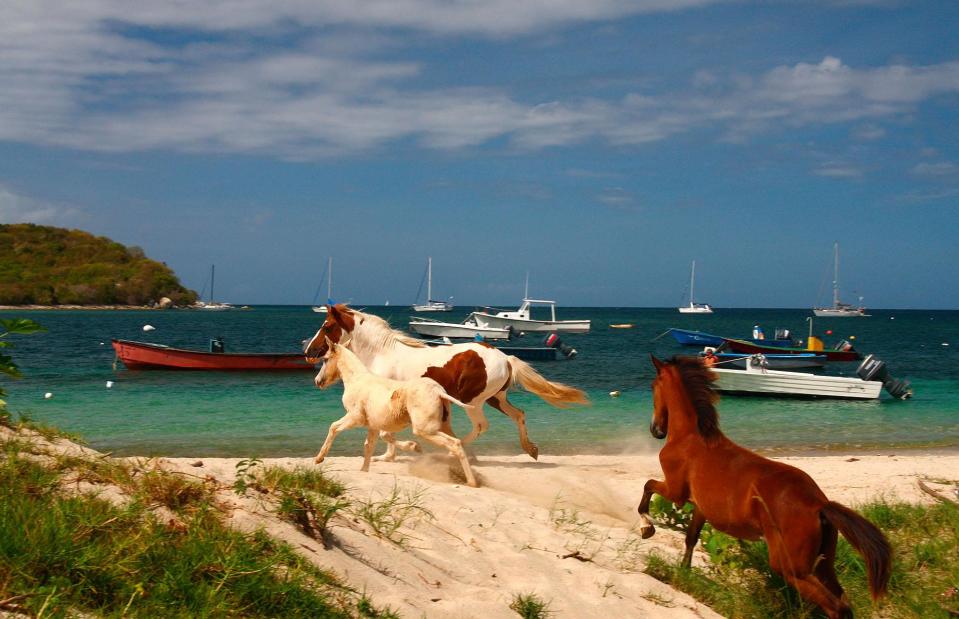
Eva Parey/Alamy Stock Photo
Perched off the eastern coast of Puerto Rico, Vieques is a laid-back island where the beaches are long and empty and life is lived at a much slower pace. Only 20 miles (32km) long and 4.5 miles (7km) wide, locals on 'mainland' Puerto Rico have nicknamed the island ‘Isla Nena’ and regard it as their little sister. Wild horses famously roam free here – you’re more likely to see a pony on the beach than a person – and the bioluminescence that illuminates Mosquito Bay at certain times of year is among the brightest and most intense in the world.
Willemstad, Curacao
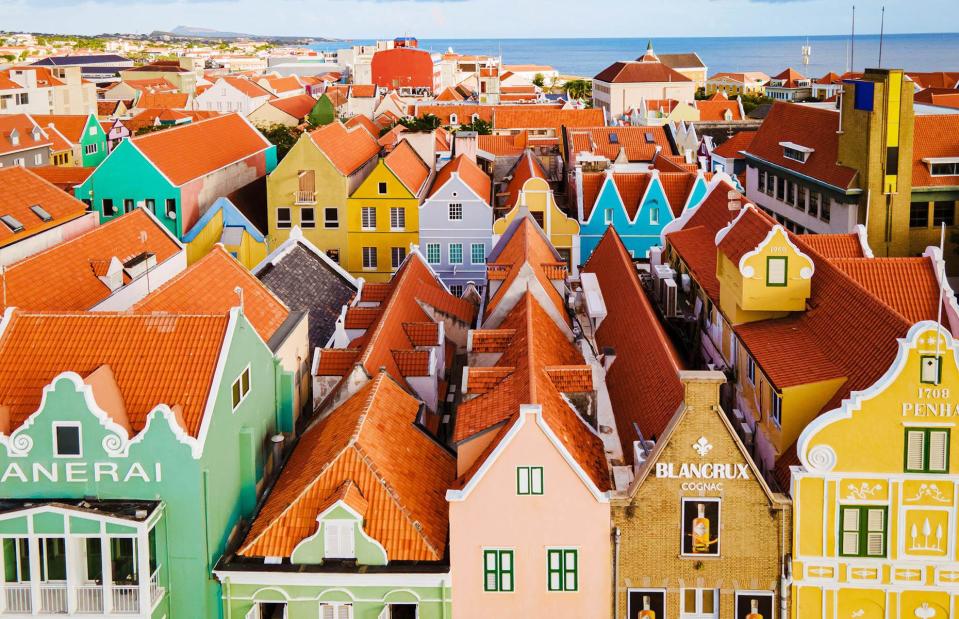
aarssen Fokke/Alamy Stock Photo
Curacao’s capital Willemstad is one of the most discombobulating sights in the Caribbean. Cross the Queen Emma Bridge into UNESCO-listed Handelskade and it’s like you've walked into a technicolour version of Amsterdam, where leaden European skies are instead a startling shade of blue and dull canals sparkle and provide shelter for tropical fish. Grab yourself a table at one of the bustling outdoor cafés, admire the stunning 18th-century buildings and marvel at the life-affirming incongruity of it all.
St Ann, Jamaica
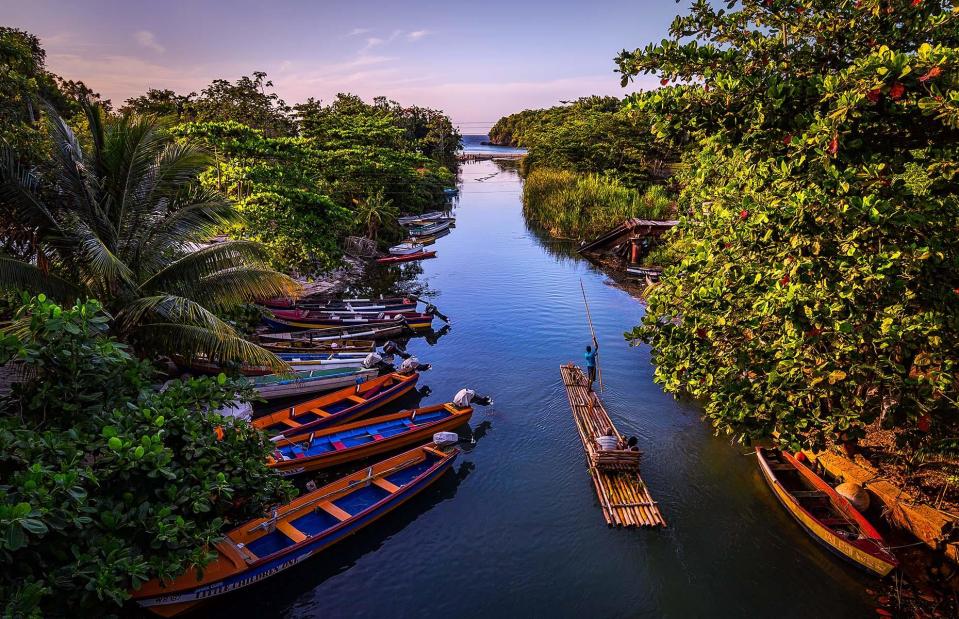
LBSimms Photography/Shutterstock
Green and lush and festooned with the colourful blooms of tropical flowers, St Ann is known as the 'the Garden Parish of Jamaica'. It's a land of cool, mountain forests, spectacular waterfalls like Dunn’s River Falls and Konoko Falls and gorgeous rivers, best experienced on a traditional bamboo raft ride. It is also the birthplace and burial site of Bob Marley, so save time to pay your respects at his colourful mausoleum.
Nelson’s Dockyard, Antigua and Barbuda
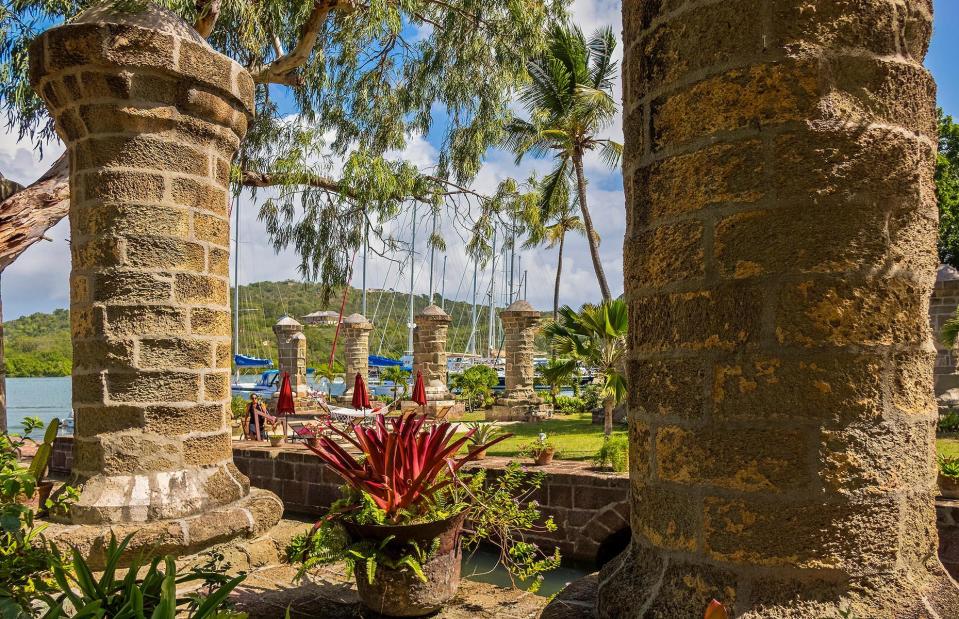
Graham Mulrooney/Alamy Stock Photo
This beautifully preserved Georgian-era marina has been in continuous use since 1745. Lord Nelson, of Battle of Trafalgar fame, was stationed here between 1784 and 1787, and the Boat House and Sail Loft Pillars date from that time. The stately sandstone buildings and manicured gardens were restored in the 1950s and granted UNESCO World Heritage Site status in 2016. Today, modern sailors still dock here for repairs, calling upon the talents of local craftsmen using skills passed down through the generations.
Arikok National Park, Aruba

Shoun Hill/Alamy Stock Photo
Arikok National Park in Aruba is the Caribbean – but not as you know it. Here the blue waters lap against an austerely beautiful rocky coastline, backed by an eerie desert landscape complete with cactuses. Head to Jamanota Hill for spectacular views across the island, drop into Fontein Cave or explore what’s left of the island’s agricultural heritage, including fences made from living cactuses. Finally, take a dip at Conchi, a natural pool protected from the sea by large rock formations and only reachable by 4WD.
Pig Beach, Big Major Cay, Bahamas

Beara Creative/Alamy Stock Photo
With so many gorgeous beaches in the Caribbean, it can be difficult to stand out. This stunning stretch of sand on Big Major Cay differentiates itself by the company it keeps. Pigs. And lots of them. The result is a magical place where wild pigs swim, and tourists come from all over the world to watch them, feed them and, for the more adventurous visitors, swim with them. While we’re hard-pressed to say the pigs are among the most beautiful sights in the region, they are definitely cute, bringing their own special charm to this lovely corner of the Caribbean.
Montserrat

IndustryAndTravel/Alamy Stock Photo
After the capital of Plymouth was all but wiped out by a volcanic eruption in 1995, and two thirds of the island's population forced to evacuate, tourists have been giving the beautiful island of Montserrat a wide berth. Which is a shame, because most of its black-sand beaches, coral reefs, soaring mountains and rainforest-covered hills were left untouched by the event. Nature lovers can and should immerse themselves in the island’s unique plant and animal species – just keep an eye on the smoking Soufriere Hills.
Ciudad Colonial, Santo Domingo, Dominican Republic
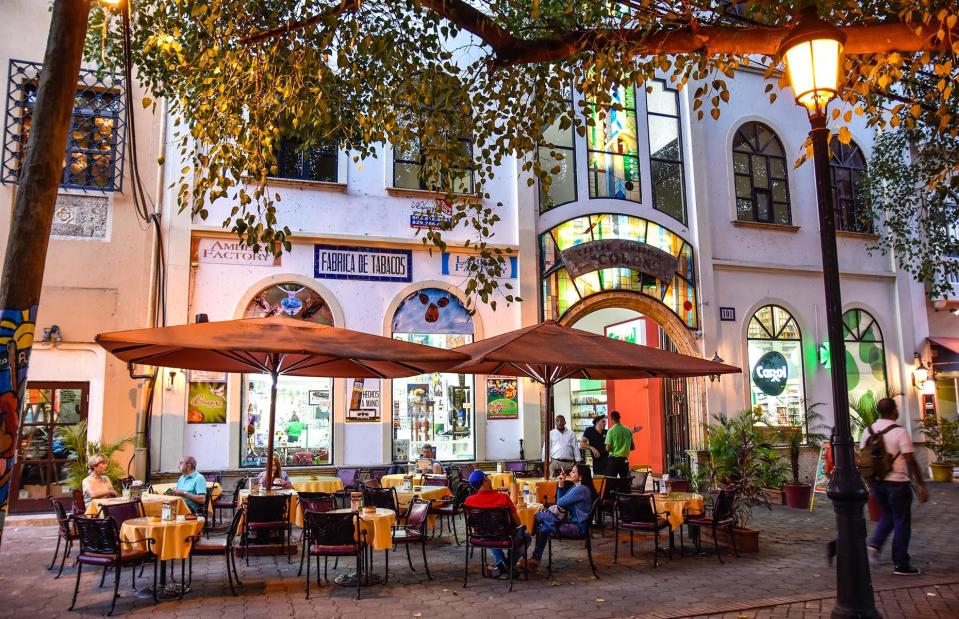
GiuseppeCrimeni/Shutterstock
Santo Domingo is built on the spot where Christopher Columbus made landfall on his famous voyage of 1492. The historic centre of the city is a jumble of beautifully restored buildings, shaded by venerable trees and covered in cascading bougainvillea. But that's not to say the city is a museum. Many buildings have been left to crumble and the area definitely feels lived in – especially around Calle El Conde where locals gather to dine alfresco or gossip over a coffee.
Stone Arch, Anguilla
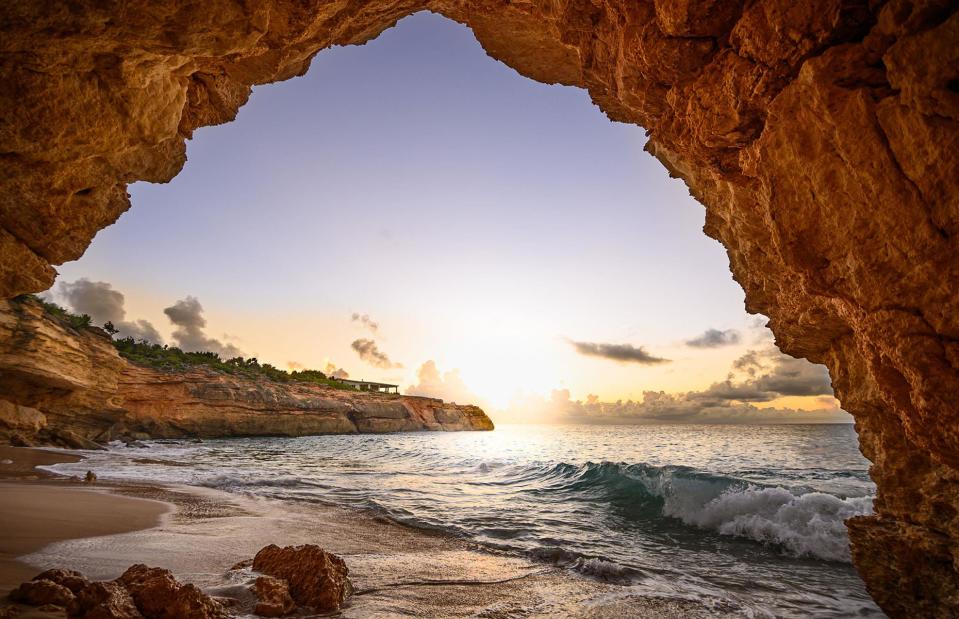
Rob G Films/Shutterstock
This natural stone arch near West End Village in Anguilla has become a symbol of the island, but very few people actually know where it is. Ask a local and they’ll probably just shrug their shoulders. Boat captains are more switched on, as it’s a must-see stop on most boat trips around the island, and the arch is well-marked on Google Maps. Follow the directions and watch the sunset over the sparkling sea. Magical.
Trinidad and Tobago Carnival
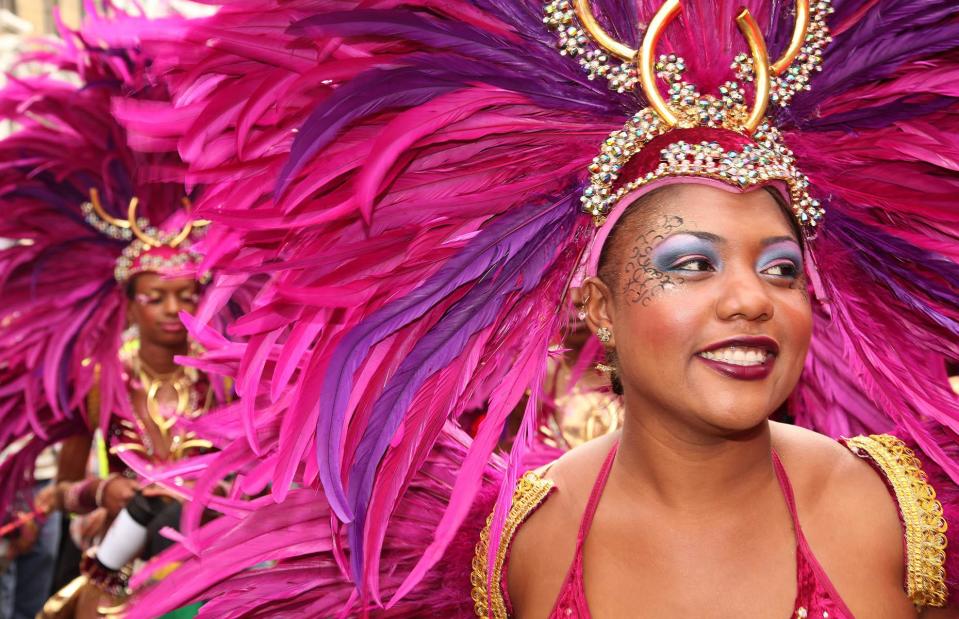
Darren Woolway/Alamy Stock Photo
The Trinidad and Tobago Carnival originated during the time of slavery. Banned from attending their masters’ parties and masquerades, they held their own costumed events which ended up being much more fun anyway. Today it is regarded as one of the greatest street parades in the world, turning the streets of Port of Spain into a cavalcade of colour and sound on the Monday and Tuesday before Ash Wednesday. When the dancers parade through the streets in all their glittering finery, there is no more beautiful sight in the Caribbean.
Valle de Vinales, Cuba

mauritius images GmbH/Alamy Stock Photo
Nearly 100 miles (180km) west of Havana, Vinales is one of the most beautiful places in Cuba. Here limestone outcrops called mogotes rise from verdant farmland whose rich red soil is the most fertile on the island. This gorgeous valley can be explored by bicycle, horseback or on hikes, and includes Los Acuaticos, Valle del Palmarito and Cuba’s largest cave system, Gran Caverna de Santo Tomas. Or you could just kick back on the veranda of your casa particular (homestay) and soak up the extraordinary view.
St Kitts and Nevis
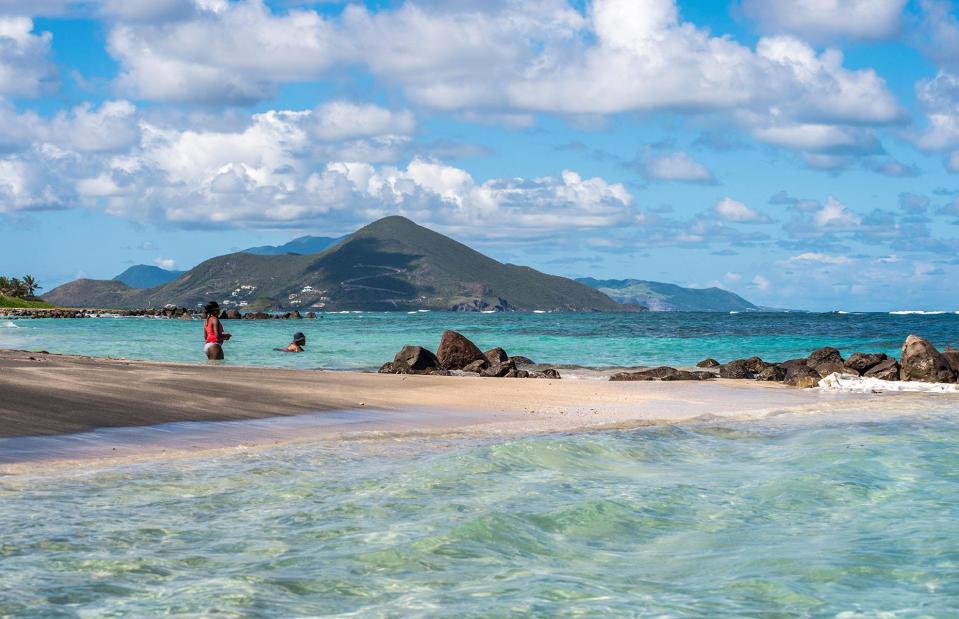
Editorial, Alius Imago/Alamy Stock Photo
These twin islands, in the Leeward Islands chain of the Lesser Antilles, offer the best of the Caribbean in a gorgeous compact package. The colourful capital, Basseterre, is the perfect blend of history and island vibes, while brooding Brimstone Hill Fortress is a reminder of the islands’ colonial past. Beaches like Banana Bay on St Kitts and Oualie Beach on Nevis are equal to any in the region, while Mount Liamuiga, the tallest peak on St Kitts, offers a cloud-piercing hike. Then take the ferry ride across ‘The Narrows’ to the soothing hot springs on Nevis. Perfect.
Shirley Heights, Antigua and Barbuda
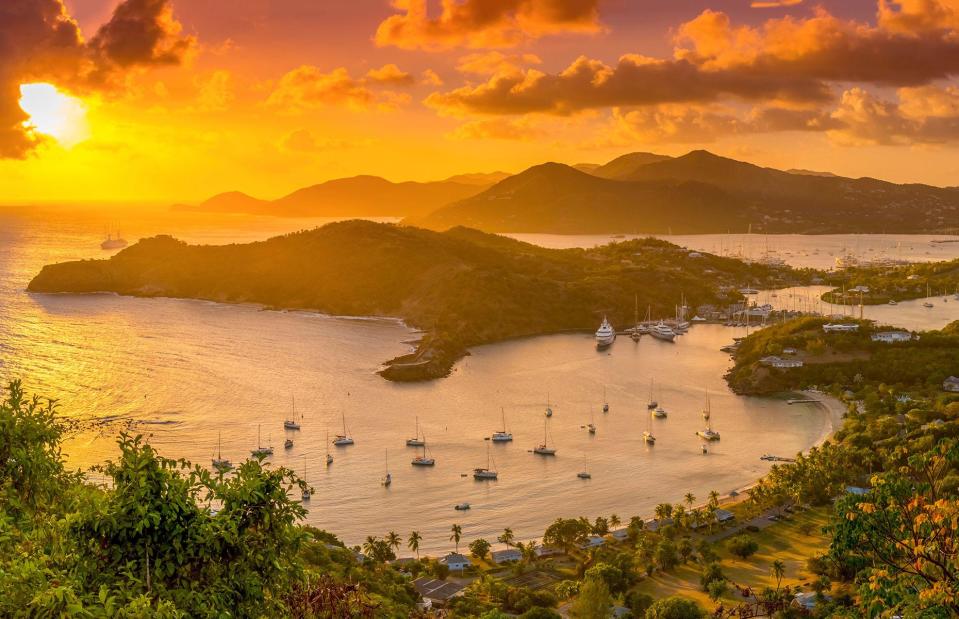
Roberto Moiola/Alamy Stock Photo
Is there a better place to watch the sunset in the Caribbean than Shirley Heights in Antigua? There’s the view, of course. Sitting 490 feet (150m) above English and Falmouth Harbours, you can watch the sun stoop below the horizon over sparkling inlets dotted with yachts, and low hills twinkling with light. Come on a Thursday or a Sunday and this restored military lookout really gets going, with reggae and steel drum bands, a lively bar and the smell of chicken grilling on charcoal barbecues.
Plage des Salines, Martinique
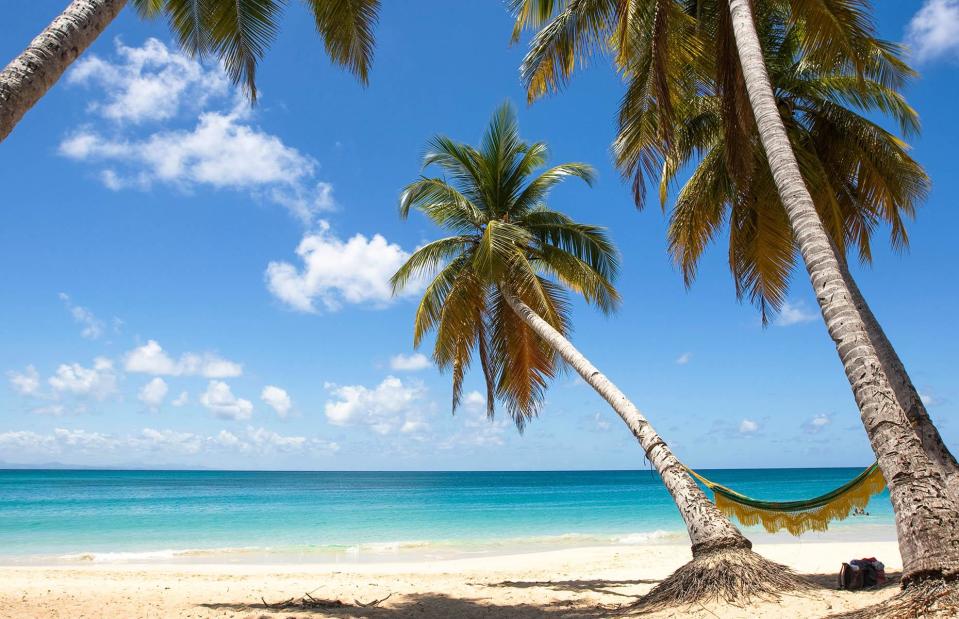
Goncalo Diniz/Alamy Stock Photo
A long strip of white sand, lined with coconut trees bowing respectfully towards an impossibly turquoise sea, Plage des Salines near St Anne on Martinique is the Caribbean beach you’ve always imagined. It’s popular, of course, but with close to 4,000 feet (1,200m) of powder-soft beachfront to choose from, it’s not hard to find your little piece of paradise. There are some small lolos (restaurants) selling snacks, but those in the know bring their own lunch to enjoy a picnic at one of the tables placed strategically at the back of the beach, in the shade.
Tortola, British Virgin Islands
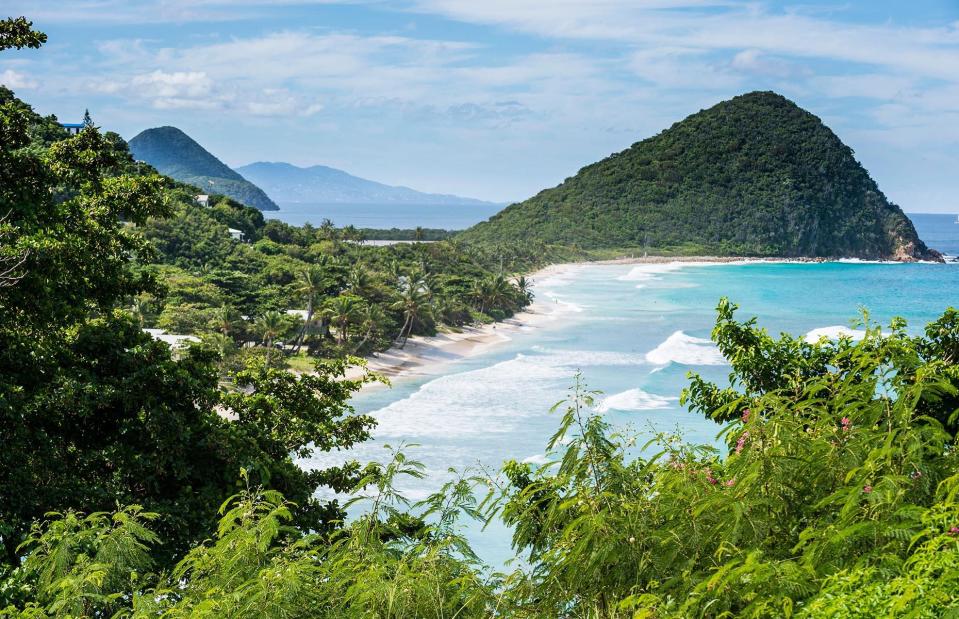
mauritius images GmbH/Alamy Stock Photo
Tortola is the largest of the British Virgin Islands (BVIs) and blessed with some of the most beautiful beaches in the world. Lay your towel down at Cane Garden Bay, Smuggler’s Cove or gorgeous Long Beach (pictured) and you may never want to leave. Road Town is the colourful capital of the BVIs and a lively yachting hub. The lush, forested slopes of Sage Mountain National Park offer cool respite, as well as trails leading to sweeping views over neighbouring cays. And history buffs will want to explore the multitude of museums, forts and distilleries that dot the island.
Now discover the most exciting experiences to enjoy in the Caribbean...


